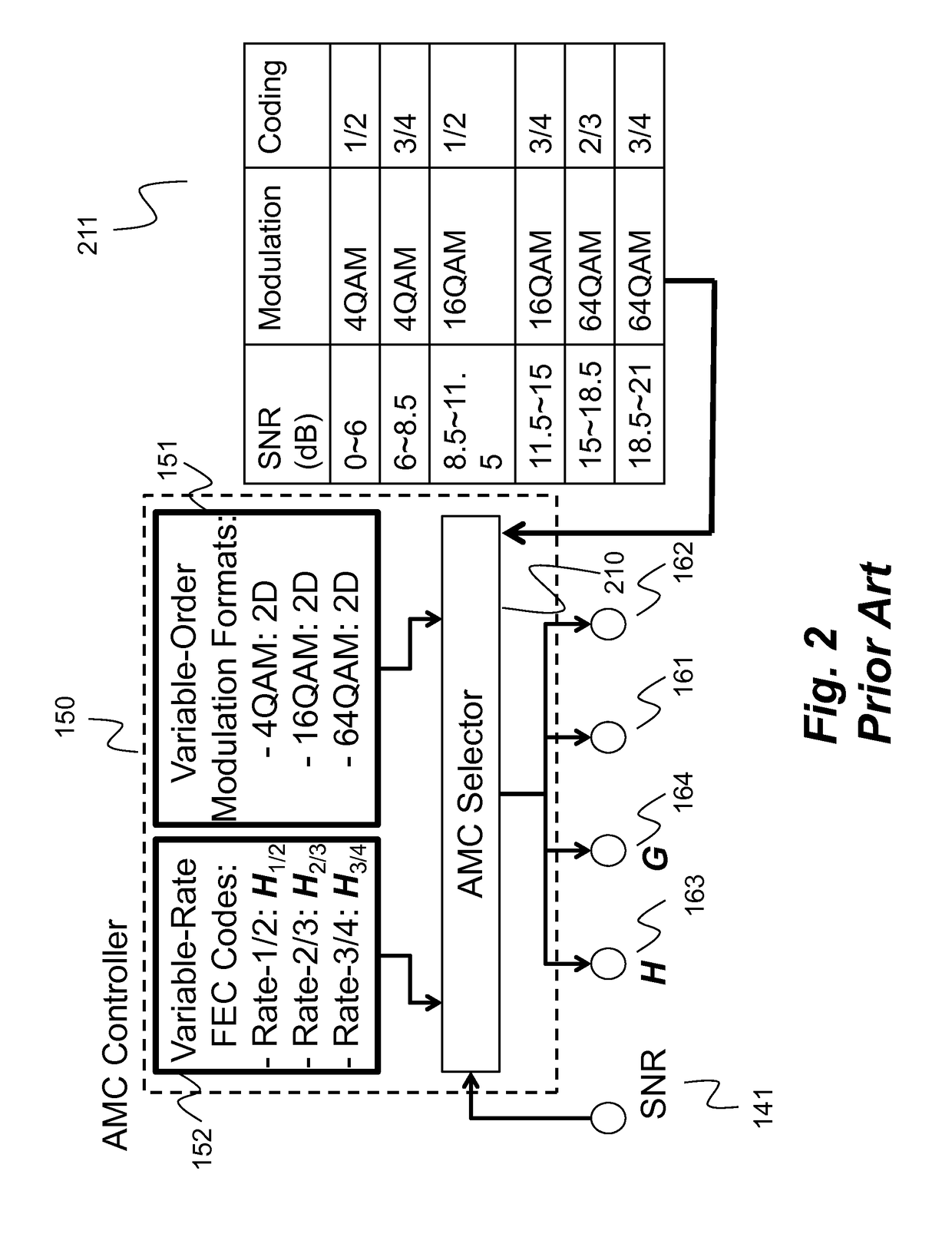Method and system for reliable data communications with adaptive multi-dimensional modulations for variable-iteration decoding
a multi-dimensional modulation and data communication technology, applied in the field of error control coding for digital data communications, can solve the problems of not solving the problem of one optimized degree distribution of irregular ldpc codes at a certain condition, no obvious way to optimize ldpc codes for high-order and high-dimensional modulations, and improving decoder performance. , the effect of simplifying the transmitter
- Summary
- Abstract
- Description
- Claims
- Application Information
AI Technical Summary
Benefits of technology
Problems solved by technology
Method used
Image
Examples
Embodiment Construction
[0026]FIG. 1 shows a network to transmit digital data from a transmitter 110 to a receiver 130 over communications channel 120 with an adaptive modulation and coding (AMC) controller 150 using principles employed by some embodiments of the invention. The communications channel 120 includes, e.g., fiber for optical communications, free space for visible light communications, air for radio communications, water for acoustic communications, coaxial cable for power line communications, and so on.
[0027]At the transmitter 110, the digital data coming from a source 111 are encoded by an encoder 112 into coded words by a forward error correction (FEC) code, e.g., such as a low-density parity-check (LDPC) code. For such linear codes, the digital data s of a length N−M are multiplied arithmetically by a generator matrix G 164 of a size N-by-(N−M), which appends parity-check data p of a size M for the receiver 130 to correct potential errors. The code rate is defined by R=1−M / N. The coded word...
PUM
 Login to View More
Login to View More Abstract
Description
Claims
Application Information
 Login to View More
Login to View More - R&D
- Intellectual Property
- Life Sciences
- Materials
- Tech Scout
- Unparalleled Data Quality
- Higher Quality Content
- 60% Fewer Hallucinations
Browse by: Latest US Patents, China's latest patents, Technical Efficacy Thesaurus, Application Domain, Technology Topic, Popular Technical Reports.
© 2025 PatSnap. All rights reserved.Legal|Privacy policy|Modern Slavery Act Transparency Statement|Sitemap|About US| Contact US: help@patsnap.com



